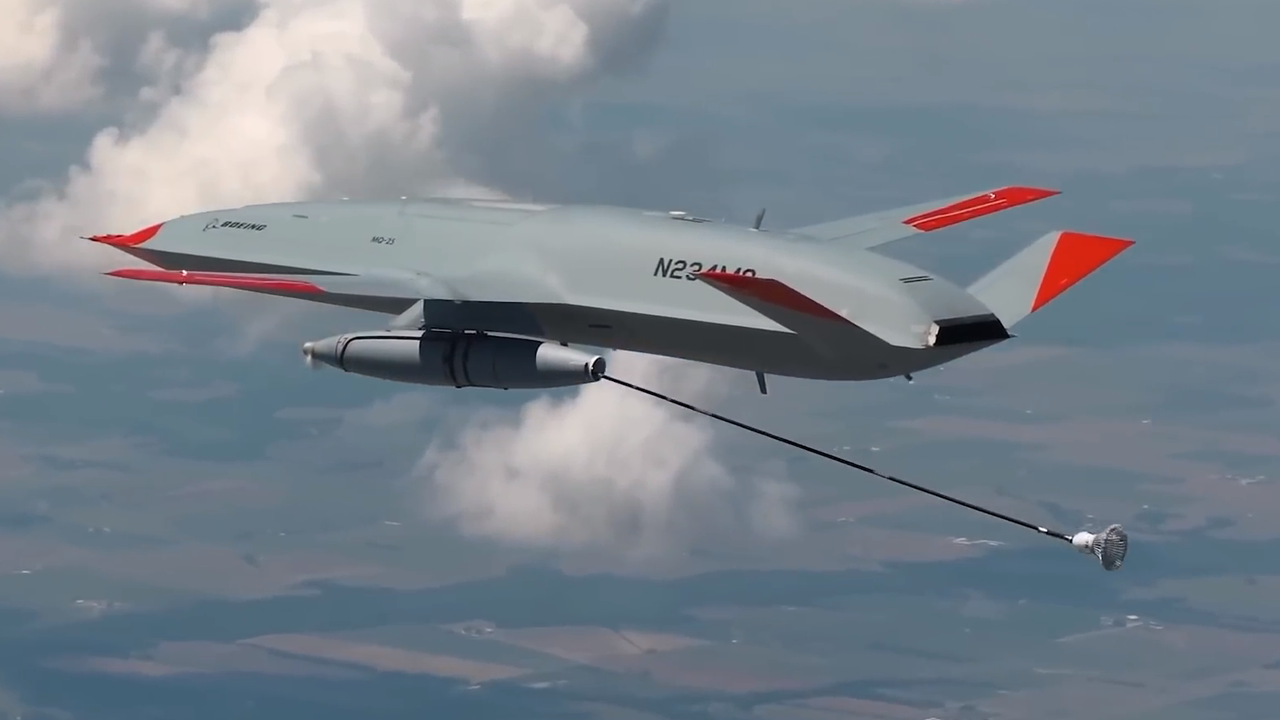In the ever-evolving landscape of modern warfare, the United States leads the...
U.S. Navy Pioneers Aerial Refueling Drone Launch from Aircraft Carrier
On August 23, 2025, the United States Navy marked a historic milestone in naval aviation by successfully launching the Boeing MQ-25 Stingray, the world’s first operational carrier-based unmanned aerial refueling drone, from the USS George H.W. Bush. This groundbreaking achievement ushers in a new era of unmanned carrier operations, enhancing the Navy’s strategic capabilities and redefining the future of aerial warfare.
The MQ-25 Stingray, developed under the Carrier-Based Aerial-Refueling System (CBARS) program, is designed to extend the combat range of carrier-based aircraft, such as the F/A-18 Super Hornet, EA-18G Growler, and F-35C Lightning II, while also offering potential for intelligence, surveillance, and reconnaissance (ISR) missions.

The MQ-25 Stingray addresses a critical operational gap in the U.S. Navy’s carrier air wings. Currently, 20-30% of F/A-18 Super Hornets are diverted from combat roles to perform aerial refueling, reducing the fleet’s overall combat effectiveness. With a fuel capacity of approximately 15,000 pounds and a range of 500 nautical miles, the MQ-25 can refuel multiple aircraft, extending their operational reach by up to 300 miles. This capability allows the Navy to optimize its manned assets for combat missions, significantly enhancing the Carrier Air Wing’s flexibility and endurance.
The successful launch demonstrates the Navy’s commitment to integrating unmanned systems into its operations, a strategic evolution aimed at addressing emerging threats, particularly in contested environments like the Indo-Pacific.
The MQ-25’s development began in 2018 when Boeing was awarded a contract to produce engineering development model (EDM) aircraft. The T1 test asset, which first flew in 2019, conducted successful refueling demonstrations with an F/A-18, E-2D Hawkeye, and F-35C, proving its reliability. In 2021, the T1 was integrated aboard the USS George H.W. Bush for deck-handling tests, paving the way for full carrier integration.
The Unmanned Air Warfare Center (UAWC) aboard the carrier, equipped with the Unmanned Carrier Aviation Mission Control System (UMCS) MD-5E Ground Control Station, enables seamless command and control of the MQ-25. The Navy plans to field 22 MQ-25s by 2028, with initial operational capability expected by September 2025 and full carrier deployment by 2026.

This launch is a testament to decades of advancements in unmanned aviation. The Northrop Grumman X-47B, a predecessor, demonstrated autonomous carrier operations in 2013, including takeoffs, landings, and the world’s first fully autonomous aerial refueling in 2015. However, the X-47B was a demonstrator, not a production model.
The MQ-25, built on lessons from the X-47B and Boeing’s Phantom Ray, is the first purpose-built carrier-based drone, designed for affordability, adaptability, and integration with manned aircraft. Its V-tail design and Rolls-Royce AE 3007N turbofan engine balance performance with cost-effectiveness, though it sacrifices some stealth for operational efficiency.
The implications of this technology are profound. By freeing up manned fighters from refueling duties, the MQ-25 enhances the Navy’s ability to project power over greater distances, countering threats like China’s anti-ship missiles. Additionally, its potential ISR and communications relay roles could further expand the Carrier Strike Group’s versatility.
The Navy’s investment in unmanned systems, including the $898 million allocated in the 2025 budget for MQ-25 procurement and testing, underscores its focus on modernizing naval aviation. As adversaries like China and Russia advance their own drone technologies, the U.S. Navy’s leadership in carrier-based unmanned systems ensures it remains at the forefront of global naval power.

The successful launch of the MQ-25 Stingray from an aircraft carrier is a pivotal moment, signaling the Navy’s readiness to embrace unmanned aviation. As the program progresses, the MQ-25 will likely pave the way for future unmanned platforms, potentially transforming the Carrier Air Wing into a hybrid force of manned and unmanned systems. This milestone not only strengthens U.S. naval dominance but also sets a new standard for global naval aviation.
Don't miss those
The Art of Crafting Speed: Inside...
BMW Motorrad, the motorcycle division of the iconic German automaker BMW, is...
The Deadliest Nuclear Bomb Ever Tested...
US Tests The Most Powerful Nuclear Bomb in History – Unprecedented Military...
Real-Life Superhuman Moments Captured on Camera
In a world where challenges often seem overwhelming, glimpses of real-life heroes...
Billion Tons of Sugarcane: The Art...
Sugarcane, a towering tropical grass, is the backbone of global sugar production,...
U.S. Navy Pioneers Aerial Refueling Drone...
On August 23, 2025, the United States Navy marked a historic milestone...







